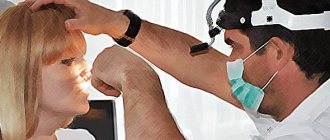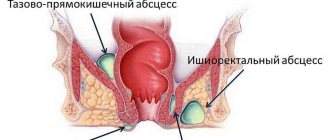Blepharitis is an inflammatory disease that affects the edges of the eyelids. The disease is one of the most common causes of discomfort and eye irritation.
Every third patient who sought help from an ophthalmologist for eye inflammation was diagnosed with blepharitis. Of course, such a common pathology causes a lot of discussion in ophthalmological circles. What should the patient do? How to understand in what cases it is necessary to contact a specialist?
Blepharitis - what is it?
Blepharitis is inflammation of the edges of the eyelids. As a rule, this disease is chronic. However, not always. It depends on the form of the pathology. Actually, blepharitis is a group of eye diseases accompanied by an inflammatory process on the eyelids. The most common cause is infection of the eyelids with staphylococcus. The pathology manifests itself in such typical ophthalmological symptoms as itching, lacrimation, secretion and the appearance of rashes on the eyelids. If the prognosis is unfavorable, the patient's vision may deteriorate significantly. There is a risk of losing it completely. At the same time, blepharitis, along with keratitis and conjunctivitis, is one of the most common eye diseases. Why is it so dangerous? To answer this question, it is necessary to understand how the disease develops.
Complications
If you are diagnosed with blepharitis, be prepared for complications of the disease. They are especially pronounced in children. Frequent consequences:
- impaired eyelash growth;
- barley;
- dry eyes;
- blepharoconjunctivitis;
- keratitis;
- corneal injury;
- discomfort when wearing contact lenses;
- chalazion;
- decreased vision;
- secondary glaucoma;
- inflammatory processes;
- scleritis;
- scars on the dermis of the eyelids.
How does blepharitis occur?
How blepharitis will develop depends on the etiology of the disease, the state of the person’s immunity and other factors. The general principles of the occurrence of the disease can be described using the example of staphylococci or streptococci entering the body. It is these microorganisms that most often cause blepharitis.
There are microscopic holes on the eyelids. They are called excretory ducts. They house the meibomian glands. Also on the ducts are eyelashes, which have their own glands (Zeiss, Moll). Viruses, bacteria, and fungi can enter the excretory ducts. This does not immediately lead to an inflammatory process. It will begin with a weakened immune system. Microbes will be in the ducts and will begin to actively multiply there as soon as a person has a slight cold or hypothermia. The picture described is typical, but blepharitis can also begin with allergies, due to hormonal imbalance and for other reasons.
Forecast
Most blepharitis has a constant course and will periodically remind the patient of its existence. Only the ulcerative and demodectic forms can be completely cured, but there is always a risk of their re-development. To prevent this from happening, you should pay attention to your lifestyle and the state of your immune system. To prevent recurrence of eyelid lesions, the following measures are recommended:
- Rejection of bad habits. Both smoking and frequent drinking of alcohol negatively affect the entire body. In particular, these substances damage liver cells, which neutralize various toxic substances, blood-forming organs and skin. All this leads to a decrease in human protection from harmful external factors;
- Treatment of chronic diseases. Any pathological process in the body (infectious or non-inflammatory) leads to a strain on our adaptive capabilities. To put it simply, tissues constantly arrive under a kind of “stress” and “overwork.” Therefore, it is important to promptly identify your diseases and treat them adequately;
- Daily facial hygiene. By mechanically removing sebum and some microbes, we maintain the dermis in a normal state and allow it to fully perform its functions;
- Lifestyle correction. Excess weight, constant stay in one position, regular stress, lack of proper rest - all these factors reduce a person’s stability. It is important to correctly prioritize your health and your daily habits/activities. Changing them for the better will improve the condition of the body, and therefore the quality of life.
Despite the fact that blepharitis is not a life-threatening disease, it must be treated in a timely manner, without delaying therapy indefinitely. The sooner you start fighting the pathology, the lower the risk of its chronicity. Consequently, the better the prognosis for the person and his state of health.
Conjunctivitis Eye keratitis: photos, symptoms and treatment Glaucoma Increased intraocular pressure: symptoms, causes and treatment Ophthalmoferon Hepatitis C: first signs and treatment regimen
Causes of blepharitis
Conventionally, all causes of inflammation of the eyelid margins can be divided into two groups: external (exogenous) and internal (endogenous). An exogenous factor includes infection of cavities in the eyelid with bacteria (Aureus, Staphylococcus epidermidis, streptococci), demodex mites (acne glands), viruses (herpes and adenoviruses), fungi (candida, aspergillus) and other types of pathogenic microorganisms.
Also exogenous causes are various external irritants from the environment: dust, wind, pollen, fluff, smoke, sun, ultraviolet radiation in a solarium, chemicals (shampoo, soap, cosmetics), etc.
Endogenous causes of blepharitis - what are they?
Blepharitis often develops against a background of weakened immunity. This occurs as a result of hypothermia, constant stress, overwork, lack of sleep, exhausting diets, hypovitaminosis, as well as chronic diseases, metabolic disorders and hormonal imbalances.
We list the main internal causes of blepharitis:
- allergy;
- lack of vitamins and microelements;
- refractive errors: astigmatism, myopia, hypermetropia;
- pathologies of the eye structure;
- eye injuries;
- internal infections: sinusitis, acute respiratory infections, furunculosis;
- diseases of the gastrointestinal tract: pancreatitis, enterocolitis;
- eye tattoo, etc.
And these are not all the reasons. Blepharitis can be triggered by anemia, measles, diabetes, psoriasis, eczema, dry eye syndrome and other diseases. All of these factors determine the type of blepharitis. There are quite a lot of them, each with their own specific symptoms.
Features of pathogenesis
The pathogenesis of blepharitis consists of a number of sequential processes:
- Disturbance in the process of washing away triggers and infections from the surface of the eye, development of xerophthalmia as a result of decreased functioning of the lacrimal glands;
- Endogenous allergization of the body, possible with general somatic pathologies that contribute to changes in the cellular and chemical composition of the lacrimal gland secretion;
- Provoking factors (hypovitaminosis, dust particles, prolonged exposure to the sun) that trigger the inflammatory process.
As a result, triggers and microbial flora affect the eyelid, and a symptom complex characteristic of this disease develops.
Blepharitis of the eyelids: forms of the disease
Two classifications of blepharitis have been developed. According to clinical signs, it is divided into simple, scaly, ulcerative, demodectic, meibomian, allergic and acne. Simple blepharitis is accompanied by redness of the conjunctiva, the edges of the eyelids and their thickening, the formation of a grayish secretion in the corners of the eyes, and dilation of the meibomian glands. This form is one of the most common. Let's look at the signs of other types of inflammation.
What is scaly blepharitis?
Squamous/seborrheic blepharitis is characterized by thickening of the eyelid margins and redness, itching, and the formation of small scales at the base of the eyelashes. These desquamated particles of the epidermis can end up on the eyebrows and hair. In some patients, eyelashes begin to turn gray and fall out. These scales make it easier to distinguish this form of blepharitis from its other varieties.
Ulcerative blepharitis - how does it manifest?
The follicles of the eyelashes become inflamed, and a purulent secretion forms in the glands. The cause of inflammation is bacteria trapped in the hair cavities. Often these bacteria are Staphylococcus aureus. Crusts are observed at sites of infection. After their separation, scars form on the eyelids. Many small wrinkles appear on them. Eyelashes turn white, fall out and stop growing.
Demodectic blepharitis - what is it?
With such an inflammatory process, the patient is bothered by unbearable itching. Other symptoms of the pathology are pain in the eyes, sticky discharge along the edges of the eyelids, their thickening and redness, and the appearance of dry crusts between the eyelashes. The culprit of the disease is the demodex mite. It gets on the eyelids and begins to multiply, feeding on the secretion of the sebaceous glands. Mites are visible under microscopic examination. They are located at the roots of the eyelashes.
Meibomian blepharitis - how does it develop and manifest?
With this form of the disease, the eyelids become very inflamed, thickened and reddened. This is due to the fact that the meibomian glands begin to produce a lot of secretion, but it is practically not excreted due to blockage of the excretory ducts of the sebaceous glands.
Allergic blepharitis
Inflammation that occurs as a result of allergies is always accompanied by lacrimation, swelling, itching, increased photosensitivity, pain in the eyes, redness of the eyelids, as well as the conjunctiva, since the inflammatory process also affects the mucous membrane. The disease most often develops in spring or summer. Some patients are diagnosed with a drug form of allergic blepharitis.
Folk remedies
We have a huge variety of different recipes open to us. Moreover, you don’t have to go to the field and look for the right plant there, you just need to go to the pharmacy and buy the right herbal mixture. But it must be remembered that any treatment, even with folk remedies, requires the correct diagnosis of the disease or infection.
- Bird cherry infusion is used to rub the eyes in case of acute conjunctivitis, and as a mouth rinse for stomatitis. Due to the high content of amygdalin, the berries are used without seeds. 60 gr. Flowers are poured into 300 ml. Boiling water, leave for 10 hours in a steam bath, filter through gauze and apply to the eyes 2-3 times a day. Contraindications for women with signs of pregnancy, as well as those who have a contraceptive effect.
- Tea lotions: pour boiling water over tea bags and apply them to your eyelids for 20 minutes. Reduces inflammation, soothes itching.
- Apply syntomycin ointment to the edges of the eyelids 3 times a day until the condition completely improves.
- The remedy is especially effective for scaly blepharitis. Bring corn oil to a boil, wait until it cools, lubricate the edges of the eyelids 3 times a day.
- For purulent eye infection. Wash your eyes daily with a 2% aqueous solution of boric acid, and apply lotions with fresh (boiled) cottage cheese before going to bed. This method has its drawbacks. With constant use, acute poisoning of the body, vomiting, diarrhea, headaches, and convulsions occurs.
- Infusion of thyme with chamomile. This collection is a very strong anti-inflammatory agent. Apply lotions 3-4 times a day. There are no contraindications for use, with the exception of a selective allergic reaction.
- Laundry soap works well against Demodex mites. Soap foam is applied to the affected area, after 3-5 minutes it is washed with water and lubricated with Vaseline.
- Ulcerative blepharitis is well treated with an infusion of celandine herb. Pour 2 tablespoons of herbs with a glass of boiling water and let stand for 2 hours. The infusion is ready.
- Scaly blepharitis can be cured with burdock oil; the affected areas of the eyelids are generously lubricated at night.
- To heal wounds on the edges of the eyelids, you can use fresh aloe juice.
- Thyme herb in the amount of 2 teaspoons, pour 150 ml. Boiling water, leave the resulting decoction for 1.5 hours. Has an antibacterial effect. Wipe your eyes with the solution morning and evening.
- Cook 1 onion over low heat for 40 minutes in 0.5 liters of water, strain through a colander. Rinse your eyes with the resulting decoction every 2-3 hours. Healing agent.
- Boil 12 small bay leaves in 0.25 liters of water for 3 minutes. An effective remedy for allergic blepharitis.
- Herbal mixture for eye baths - take chamomile, string grass and calendula leaves in equal parts. 2 tablespoons of the resulting mixture, pour 170.0 ml of boiling water and place in a water bath for 10 minutes, preferably leave for 1-2 hours. Cool, moisten sterile cotton swabs and apply to eyelids for 25 - 35 minutes. This collection is an anti-inflammatory and antiseptic, helps with various forms of blepharitis.
- The method is not for the picky. We take our urine, moisten a cotton or gauze swab generously, and place it on the eyes. At this moment, try to blink so that the liquid gets onto the infected areas or wounds. This method does not require any special preparation. Very effective.
Types of blepharitis by localization of inflammation
Based on this basis, blepharitis is divided into anterior marginal, posterior marginal and angular. In the first case, the lesion covers only the ciliary edge of the eyelid. With posterior blepharitis, the meibomian glands become inflamed, and with angular blepharitis, the inflammatory process is localized in the corners of the eyes.
So, there are quite a few types of blepharitis, each of them has its own specific symptoms. There are also general signs characteristic of most forms of this pathology. Primary - itching in the eyes, redness and swelling of the eyelids. Secondary symptoms include:
- thickening of the edges of the eyelid;
- photophobia;
- tearfulness;
- feeling of heaviness in the eyes;
- discharge, including purulent;
- ulcers on the edges of the eyelids, rashes;
- pain in the eyes and sensation of a foreign body.
Diagnosis of blepharitis
A doctor can detect blepharitis during a visual examination. To confirm the diagnosis, establish the type of disease and its causes, biomicroscopy of the eye is performed, eyelashes are examined under a microscope for the presence of mites, and visual acuity is checked. If allergic blepharitis is suspected, appropriate tests are performed. If crusts are observed, a bacteriological study of the secreted secretion is prescribed. It is very important for the doctor to determine the cause of the inflammation. The method of treating blepharitis depends on this.
Prevention
- compliance with hygiene rules;
- improving sanitary standards at work and at home;
- do not rub your eyes with dirty hands;
- strengthen the immune system, harden the body;
- adhere to a healthier diet;
- respond promptly to the occurrence of various infectious diseases;
- eyelid massage and physiotherapy.
Timely contact with specialists will prevent infections from developing into chronic diseases. No deaths have been observed from this disease, but advanced types of infections can ruin the fate of any person. Follow the rules of personal hygiene, and the disease blepharitis will recede from you.
Blepharitis in adults: treatment
How is eyelid blepharitis treated? For this pathology, antibacterial and antihistamines, sulfonamides, antiseptics, vitamin complexes, glucocorticosteroids and other medications can be prescribed. In addition to drug therapy, physiotherapeutic and surgical treatment can be carried out. Simple blepharitis is treated with Furacilin and dexamethasone ointment. A solution made from Furacilin tablets removes crusts from the eyelid. Their edges can be carefully treated with a solution of brilliant green. An ointment that helps relieve inflammation is used in the first 2-3 days of the disease.
Seborrheic blepharitis can also be treated with medication. Hydrocortisone-Pos 1 percent can be prescribed as a hormonal ointment to eliminate the inflammatory process. For severe cases - 2.5 percent ointment. “Artificial tear” and “Oftagel” help relieve the symptoms of the pathology. If signs of conjunctivitis are observed, dexamethasone-based solutions are instilled - Dexapos, Maxidex.
How to treat demodectic blepharitis? This disease is caused by ticks getting on the eyelids. In this regard, it is necessary to first stop its reproduction. The secretion from the eyelids is removed with a tampon. It can be soaked in saline solution or baby shampoo. Dex-Gentamicin helps destroy ticks. The ointment must be applied in a thick layer.
Allergic blepharitis can be cured with antiallergenic eye drops (Alomide or Lecrolin). "Hydrocortisone-Pos" is used to relieve inflammation.
Barley is treated with warm compresses, antibacterial drops (Levomycetin, Floxal) and Tetracycline ointment. You can't do cold lotions. Because of this, blood circulation in the eyelids may be disrupted, which will lead to complications.
Blepharitis in adults is treated differently than in children. Young patients are not prescribed strong antibiotics and hormonal drugs. In any case, the patient should understand that it is impossible to treat such a serious pathology on his own at home. At the first sign of it, go to see an ophthalmologist.
Blepharitis in adults: physiotherapeutic treatment
The disease blepharitis requires an integrated approach. Physiotherapeutic methods of treatment are also used. They eliminate inflammation, promote the healing of damaged tissues, and normalize metabolic processes. The following procedures are usually prescribed:
- electrophoresis;
- UHF therapy;
- magnetic therapy;
- ultraviolet irradiation;
- irradiation with Bucca rays (the softest X-ray radiation);
- darsonvalization - exposure to soft tissues and mucous membranes with high-frequency pulsed current.
Physiotherapy is suitable for treating adults. Children are prescribed electrophoresis and magnetic therapy. This is decided by the doctor in each specific case. Vitamins, especially ascorbic acid and vitamin A. In some cases, the doctor advises the patient to follow a diet. If you have blepharitis, it is advisable to eat as much dairy and plant foods as possible. It's better to steam food. Fried, salty, smoked, fatty, sweet, and pickled foods should be excluded from the diet. It is also recommended to avoid alcohol. It greatly undermines the immune system.
How is blepharitis treated surgically?
The surgical method of treatment is used only in extreme cases when drug and physical therapy do not bring any results. When a chalazion—a benign lump on the eyelid—appears, surgery is prescribed to remove the growth. Surgery is also necessary if there is eversion (ectropion) or inversion (entropion) of the eyelid. Trichiasis - abnormal growth of eyelashes towards the eyeball - requires plastic surgery.
Infectious (ulcerative)
The growth of microbial colonies can significantly damage epithelial cells. The pus secreted by the bacteria “eats away” normal tissue and leads to the formation of small ulcers on the skin. As a rule, they quickly become covered with dense crusts, the separation of which can be very painful. Under the influence of discharge from wounds, eyelashes often stick together, and when hair follicles are damaged, their increased fragility is often observed.
The clinical picture in such patients is complemented by all signs of local inflammation, such as:
- Severe redness;
- Itching;
- Pain of moderate or low intensity, which is well relieved by NSAIDs (Nimesulide, Citramon, Meloxicam and others);
- An increase in the temperature of the skin area - the eyelid feels warmer to the touch than the surrounding tissues.
This form can be suspected based on the above symptoms, and to confirm the diagnosis and select the optimal remedies for blepharitis, it is necessary to perform a bacteriological study. The principle of this technique is simple: a swab is taken from the patient’s affected skin, microorganisms are “seeded” from it and their growth is observed. Using this method, doctors accurately determine the type of bacteria.
To get rid of harmful microbes and restore the normal state of the eyelid, complex therapy is used, including:
- Softening and removing crusts. Despite the fact that this procedure is quite simple, it is usually performed by the doctor himself. It will be quite problematic for the patient to do this on his own, due to the need to perform precise manipulations on his own eyelid. How to properly remove crusts? To do this, first apply an ointment that reduces their density (ordinary Vaseline will do). After its absorption, pathological formations are gradually separated from the epithelium with tweezers;
- Antibacterial therapy. Use only after crusts have been removed to ensure maximum interaction between the drug and microbes. Preparations in the form of ointments (Erythromycin, Tetracycline, etc.) are applied in a thin layer at least 3 times a day. For severe symptoms of inflammation, doctors recommend using combined antibiotic + anti-inflammatory drugs, such as Dexa-Gentamicin;
- Restoration of metabolism in the epithelium. For this purpose, the patient is prescribed lotions with a solution of Zinc Sulfate (0.25% is sufficient).
Microbes are the most common cause of blepharitis in children. They respond well to treatment and rarely become chronic.











